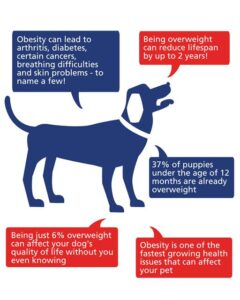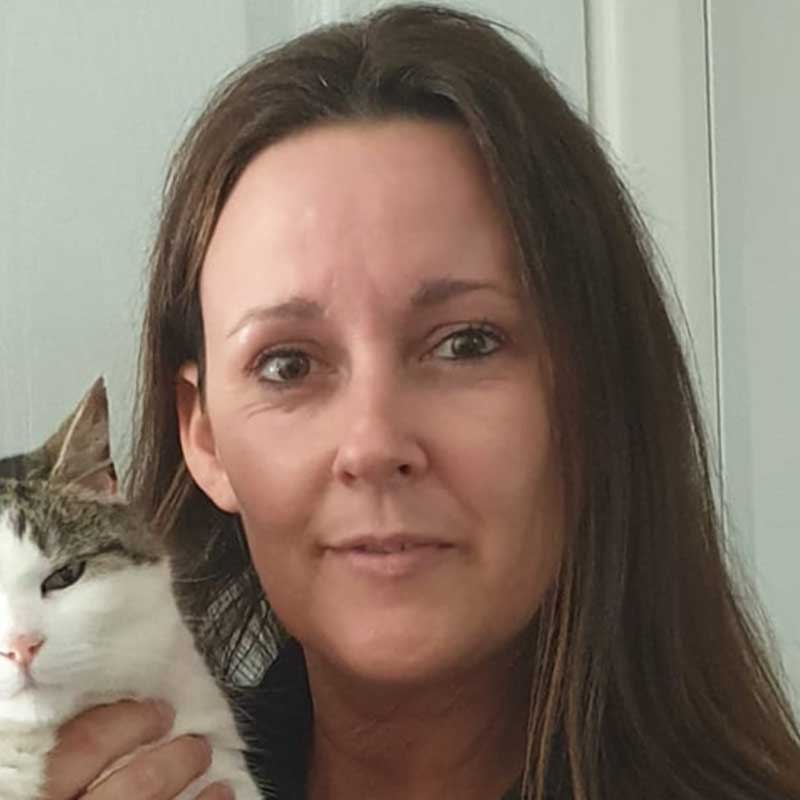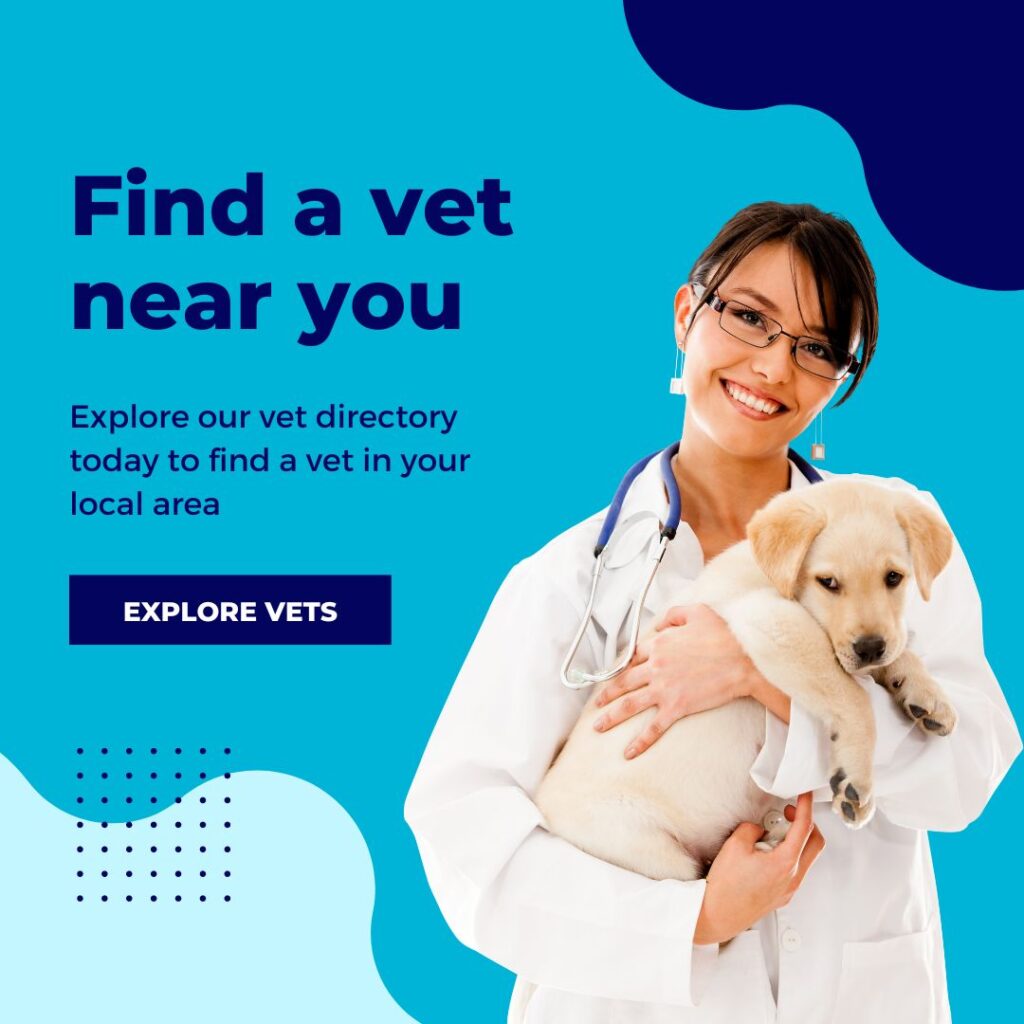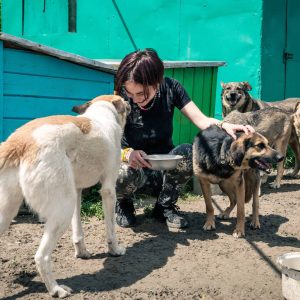With exercise being limited and their normal routine completely altered, the amount of physical stimulation they are getting has reduced. And, with our increased presence at home, they may well be receiving more attention than usual, which might lead to overfeeding. Have we fed more treats than usual? Have we practiced more training with the use of treats? Has begging behaviour increased and become more difficult to ignore? If your pet has been receiving a lot of extra food without the opportunity to exercise and burn off those calories it is highly likely that it is being stored as fat in their body and will be causing them to gain weight!
Obesity pet facts
Did you know that approximately 65% of dogs and 45% of cats in the U.K. are currently overweight? (Although, this may have increased during lockdown!) It is one of the fastest growing health issues affecting pets. Obesity (a disease in itself) can lead to many other diseases such as arthritis, diabetes, certain cancers, breathing difficulties and skin problems – to name just a few. Being overweight can also reduce your pet’s lifespan by up to 2 years.

How can you recognise if your pet is overweight?
Because we see our pets everyday it can be difficult to notice body shape changes and it may not be obvious until someone else you haven’t seen in a while points out the difference in your pet! Weight alone will not tell you if your pet is overweight; each animal is an individual and has its own natural shape. We use Body Condition Score Charts (BCS) to help us determine the ideal shape for our pets.
An animal in ideal condition should have ribs that are easily palpable when you run your hands either side of the chest (with light touch). They should have an obvious ‘tummy tuck’ that you can see and feel from underneath, and an ‘hourglass’ appearance behind the chest (the waist should tuck in).
If you can’t feel the ribs easily (without having to apply pressure) or see an obvious tuck, your pet may be carrying too much extra weight. Click on the following links below to help you determine how overweight your cat or dog may be:
How does my pet become overweight?
- Begging behaviour can be hard to ignore – especially while we are spending so much more time together. It should be resisted because it can lead to overeating and an imbalance of nutrients.
- Feeding too many treats, chews or rewards each day (on top of the correct daily food allowance) can lead to overfeeding as treats are generally high in fat and calories.
- Many people feed their animals by guessing the amount they need by sight or using old measuring cups or scoops. Studies show that you can overestimate food by up to 80% when using a measuring cup.
- If you feed your pet extra treats for special occasions (such as a Birthday cake or Christmas dinner), but don’t reduce their main meal to allow for those extra calories, this will lead to weight gain.
- If your dog or cat is not getting enough exercise to burn off the extra calories from their food and treats, excess fat will be stored in the body and the weight gain will continue.
- If your pet has been neutered their energy requirements may be reduced by up to 30%. If feeding amounts are not adjusted this can lead to weight gain.
- Remember: it is much easier to try and prevent your pet becoming overweight than it is to get the weight off!
What can you do to help your pet lose weight?
Divide food into 3 or 4 meals a day
Spreading meals out evenly throughout the day helps your pet stay fuller for longer. It also helps to improve digestion and regulate blood sugar levels in the body. And it reduces the temptation for the owner to give treats in between meals!
Feed a reduced calorie food
Cutting back on your pet’s usual food and reducing treats may be sufficient for pets who only need to make a small adjustment to their weight. But careful management is needed for those who need to lose large amounts of weight because a greater reduction in food could lead to depriving them of essential nutrients, which in turn can lead to them to becoming hungry and increasing their begging behaviours. Switching to a diet such as OSCAR High Fibre Lite or Pinnacle Plus for your dog, or Rich in Turkey for your cat, will offer reduced calories while still providing all the nutrients your pet requires. If your dog or cat is obese then you should consult your vet practice to discuss their dietary requirements.
Gradually increase regular exercise
Exercise your dog to a level that is appropriate for its size, age, breed, health, and ability. Consult your vet practice if you are unsure of how much your pet should be able to do. With cats you can begin with 2 minutes twice a day just to encourage movement which can be gradually increased over time.
Feed for ideal weight (not current weight)
Many people make the mistake of feeding a reduced calorie diet but feed for the weight they currently are. It is essential to feed for the weight your pet should be and follow the guidelines.
Use ‘slow down bowls’ and interactive feeders
Weigh food daily
Estimating food or using old scoops or mugs is not ideal for measuring. Some measuring scoops can lead to overestimating food by up to 80% per meal. Gold standard is to use scales and weigh food for each meal. You could spend 5 minutes weighing out a week’s supply to help you save time each day.
Keep a food diary
Keeping a diary and noting everyone time the animal is fed helps to involve all family members. Everyone knows when they have been fed so no ‘extra meals’ get fed! It is an opportunity to be truthful and also list any treats, extras etc. that anyone feeds as this will help you to monitor food intake.
Feed lower calorie treats and adjust feeding amounts where required
Where possible, reduce the amount of treats you feed each day. If you must feed something, then ensure it is low in calories and fat. You may need to reduce the amount of your pet’s main meal to allow for any extra treats you give.
Begging
Try to keep your pet away from you when you are eating to avoid the temptation of giving them any of your food!
Obesity is a serious disease and can lead to so many other health issues for your pet. Being just 6% above their ideal weight can have an impact on the health of dogs and cats. The good news is that getting your pet back into ideal shape can improve their quality of life and reduce the health risks associated with being overweight.
If you have any concerns about your pet’s weight, then please consult with your local vet practice.










